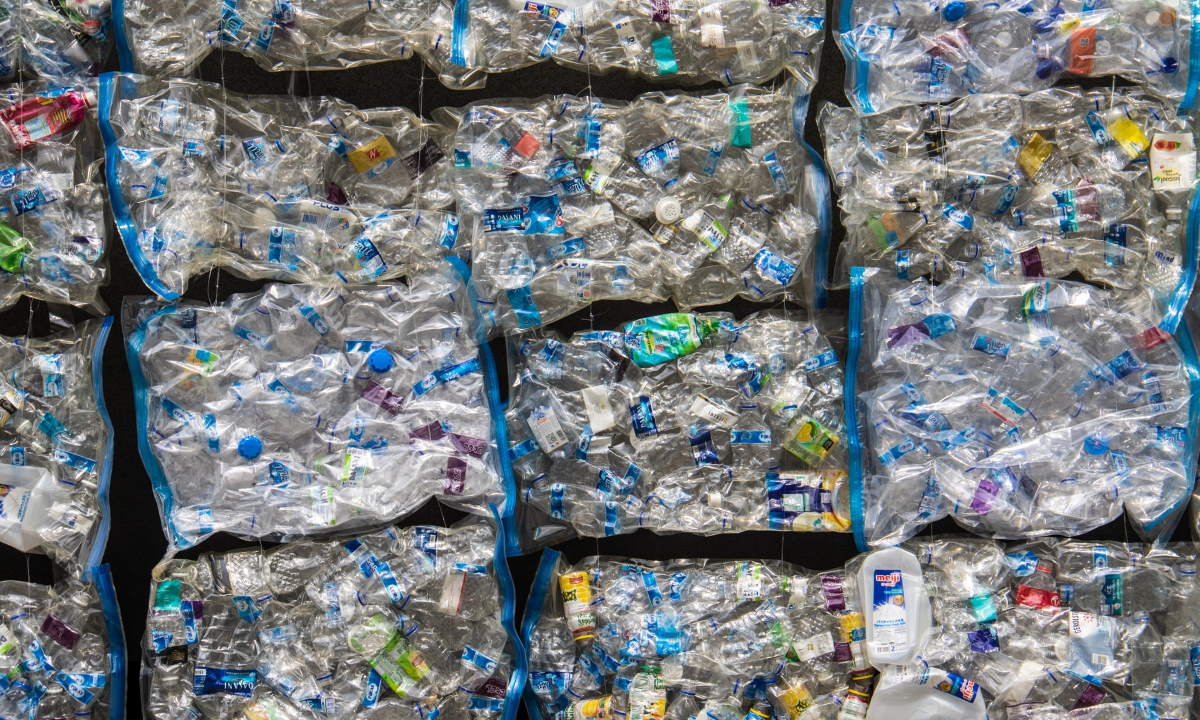Home building and design have come a long way. While most homes rely on materials like concrete, plaster, and masonry, new technologies are making it easier to convert construction and household waste into usable materials – opening up more doors for eco-friendly buildings.
Using recycled items reduces landfill input and prevents the emission of greenhouse gasses. Here are some cool ways waste is being transformed into housing materials today.
1. Use Plastic Waste in Building Materials
Repurposing trash during the construction process is important. For example, builders can use old plastic to create structural elements. Many builders around the world are experimenting with converting plastic waste into housing, a move that can possibly create both affordable and sustainable communities for people in need.
In addition, this process prevents plastic from ending up in landfills or oceans. The other benefit of using plastic debris is that it can stimulate the economy. Contractors have to work directly with trash collectors, increasing job opportunities in places where plastic waste can otherwise be overwhelming.
2. Turn Trash Into Energy
In 2017, the U.S. generated 267.8 million tons of solid waste. So, why not put it to good use? A microbiologist developed a system to break down farm debris and convert it to ethanol. We can use this fuel to heat homes or power cooking appliances.
This new energy technique is starting to become adopted by other organizations. A California company is transforming medical waste into clean energy. Other organizations, such as JBI and Aries Clean Energy, are following suit. JBI converts plastic into oils. During the process, they capture biofuel gasses, such as propane and methane.
Waste-turned-energy isn’t likely to replace fossil fuels anytime soon, but any new technologies that help houses find alternatives to these energy sources is a welcome development.
3. Decorate With Waste Materials
Repurposing your trash can be a unique and cost-effective way to decorate your home. You can use old food packaging and plastic bottles to create fun artwork. Another idea is to reuse wooden crates for storage. Leftover cans also make great containers for decorative plants.
The engineering company, Miniwiz, is already making strides in this area. They created a home exhibit showcasing decor and furniture made from post-consumer waste. The house features a desk lamp fully made out of trash.
Most homeowners likely can’t or won’t furnish with waste to this extent, but the principles expressed here can inspire more creative upcycling. If you need to buy new items, look for ones assembled using long-lasting materials to reduce long-term waste.
And if homeowners are looking for upgraded statement pieces, considering perusing neighborhood groups and thrift stores for hidden treasures – you know what they say about another person’s trash.
4. Use Recycled Cork Panels for Flooring
After opening a bottle of wine, the corkscrew often ends up in the trash. But there’s a better use for it. Some companies and upcycling enthusiasts take old wine stoppers and turn them into furnishing or decorations.
Homeowners can now find cork flooring and mosaics made from recycled waste. Some eco-friendly businesses also make acoustic walls and ceiling panels. Along with being eco-friendly, cork is soft and easy to maintain – so it’s a major win for consumers.
5. Add Bark Siding to Your Roof
Looking to repurpose waste for your home exterior, too? You may not have heard of repurposing bark, but it’s a good way to make logging more impactful. Bark siding is an environmentally friendly material you can use for your shingles. It’s also durable and low-maintenance.
Some businesses now repurpose bark to make a natural siding. They work with loggers to use every part of the tree. Also, Instead of cutting down new trees, they use pre-cut ones. Adding bark siding gives your home a rustic and cozy vibe.
6. Use Recycled Glass Tile for Your Kitchen or Bathroom
Glass tiles add a sophisticated look to your space. They work well as a kitchen backsplash, or you can place them inside your shower. Another idea is to install glass countertops. They are easy to clean and bring in natural light.
The real benefit is that glass is becoming easier to recycle and recreate. It’s easier to find recycled glass tiles and materials on the market, opening up a new world of eco-friendly and waste-reducing design for homeowners.
7. Incorporate Steel in Structural Elements
Steel is a durable material often used in the construction industry. It’s applied to framing, roofing, or other structural elements. The good news is it’s recyclable and can be repurposed instead of thrown away. Plus, it’s a pest-free material that doesn’t contain toxic chemicals.
8. Use Waste Materials for Your Driveway
You can turn your trash into porous pavement materials. FilterPave transforms recycled glass bottles and stone into stunning driveways. They even come in a variety of colors, such as jade, for a more unique appearance.
With this porous material, the pavement reduces stormwater runoff and improves water quality. Runoff water has negative environmental impacts, such as causing erosion and polluting rivers.
9. Grind Up Construction Site Debris
Quite often, construction sites leave behind debris, such as dirt or lumber waste. Contractors can use a wood chipper to turn these materials into landscaping mulch. Mulch can help plants retain water and provide nutrients.
10. Use Crushed Concrete for Gravel
Instead of dumping concrete into landfills, it can be repurposed for driveway materials. For example, crushed concrete can be a cost-effective alternative to gravel. In addition, concrete is long-lasting and easy to maintain.
- 9 Myths and Facts About Environmental Toxins - January 4, 2023
- Top 6 Deadliest Hurricanes ever recorded - November 7, 2022
- Are All-Electric Homes Feasible in the Near Future? - September 25, 2022

